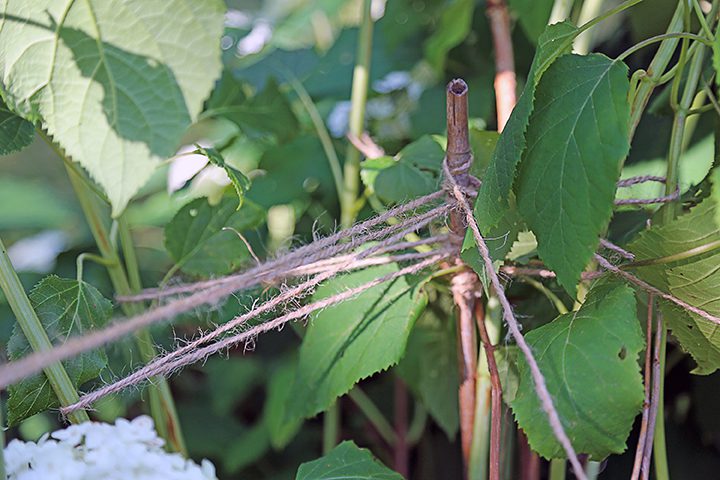Black Stem Hydrangea: What It Is How To Identify It And How To Treat It
Black Stem Hydrangea: What It Is, How to Identify It, and How to Treat It
Black stem hydrangeas are a type of hydrangea that is known for its dark, blackish-purple stems. They are a popular choice for gardeners because they are relatively easy to care for and they have beautiful flowers. However, black stem hydrangeas can be susceptible to a few diseases and pests. In this blog post, we will discuss what black stem hydrangeas are, how to identify them, and how to treat them if they become diseased or infested.
What is a Black Stem Hydrangea?
Black stem hydrangeas (Hydrangea macrophylla 'Nigra') are a type of hydrangea that is native to Japan. They are characterized by their dark, blackish-purple stems. The flowers of black stem hydrangeas can be either pink or blue, depending on the pH of the soil. In acidic soil, the flowers will be blue, while in alkaline soil, the flowers will be pink.
Black stem hydrangeas are a relatively easy plant to care for. They need full sun to partial shade and moist, well-drained soil. They are also relatively drought tolerant. Black stem hydrangeas can be propagated by cuttings or by division.
How to Identify a Black Stem Hydrangea
Black stem hydrangeas are easy to identify by their dark, blackish-purple stems. The leaves of black stem hydrangeas are also larger than the leaves of other types of hydrangeas. The flowers of black stem hydrangeas can be either pink or blue, depending on the pH of the soil.
How to Treat Black Stem Hydrangea Diseases and Pests
Black stem hydrangeas can be susceptible to a few diseases and pests. Some of the most common diseases that affect black stem hydrangeas include:
- Black spot
- Anthracnose
- Leaf spot
- Powdery mildew
Some of the most common pests that affect black stem hydrangeas include:
- Aphids
- Spider mites
- Snails
- Slugs
If your black stem hydrangea is diseased or infested, there are a few things you can do to treat it. For diseases, you can use a fungicide. For pests, you can use an insecticide. You can also try to control diseases and pests by practicing good cultural practices, such as watering your hydrangeas regularly and keeping the area around them free of debris.
Conclusion
Black stem hydrangeas are a beautiful and relatively easy-care plant. However, they can be susceptible to a few diseases and pests. If your black stem hydrangea becomes diseased or infested, there are a few things you can do to treat it. By following the tips in this blog post, you can help keep your black stem hydrangea healthy and beautiful.
Black stem hydrangeas are a stunning and unique variety of hydrangea that is sure to turn heads. Their dark, glossy stems and large, colorful blooms make them a beautiful addition to any garden. If you're interested in learning more about black stem hydrangeas, I recommend visiting . This website has a wealth of information about these amazing plants, including care instructions, planting tips, and varieties to choose from.
In addition to its informative articles, also has a beautiful gallery of black stem hydrangea photos. These photos will give you a great idea of what these plants look like in different settings. Whether you're looking for inspiration for your own garden or just want to learn more about black stem hydrangeas, is the perfect resource.
FAQ of black stem hydrangea
1. What is a black stem hydrangea?
A black stem hydrangea is a type of hydrangea that is known for its dark stems. It is a deciduous shrub that can grow up to 6 feet tall. The flowers of black stem hydrangea are typically white or pink. The black stems are a distinctive feature of this plant, and they become even more pronounced in the fall when the leaves turn yellow.
2. How do I care for a black stem hydrangea?
Black stem hydrangeas are relatively easy to care for. They prefer full sun to partial shade, and they need well-drained soil. They should be watered regularly, especially during the summer months. In the fall, you can add a layer of mulch around the plant to help protect it from the cold.
3. How do I get my black stem hydrangea to bloom?
Black stem hydrangeas need a cold winter to bloom. If you live in a warm climate, you may need to bring your plant indoors for the winter. You can also help your plant bloom by fertilizing it in the spring.
4. What is the pH of the soil for a black stem hydrangea?
The pH of the soil for a black stem hydrangea is important because it affects the color of the flowers. In acid soil, the flowers will be blue. In alkaline soil, the flowers will be pink. You can test the pH of your soil with a pH testing kit.
5. How do I propagate a black stem hydrangea?
You can propagate a black stem hydrangea by taking cuttings in the spring or summer. Make sure to choose a healthy cutting with at least 3 nodes. Dip the cutting in rooting hormone and plant it in a pot of well-draining soil. Keep the soil moist and the cutting in a warm, shady location. The cutting should root in about 4-6 weeks.
Image of black stem hydrangea
- Image 1: A close-up of a black stem hydrangea flower head. The petals are a deep pink color, and the black stems are in sharp contrast.
- Image 2: A full-size black stem hydrangea bush in bloom. The flowers are a light pink color, and the black stems are a striking feature.
- Image 3: A black stem hydrangea bush in the fall. The leaves are a golden yellow color, and the black stems are a beautiful backdrop.

- Image 4: A black stem hydrangea branch with no leaves. The black stems are a deep, rich color, and they make a striking statement in the winter garden.

- Image 5: A black stem hydrangea in a pot. This is a great way to enjoy the beauty of this plant indoors during the winter months.


Post a Comment for "Black Stem Hydrangea: What It Is How To Identify It And How To Treat It"